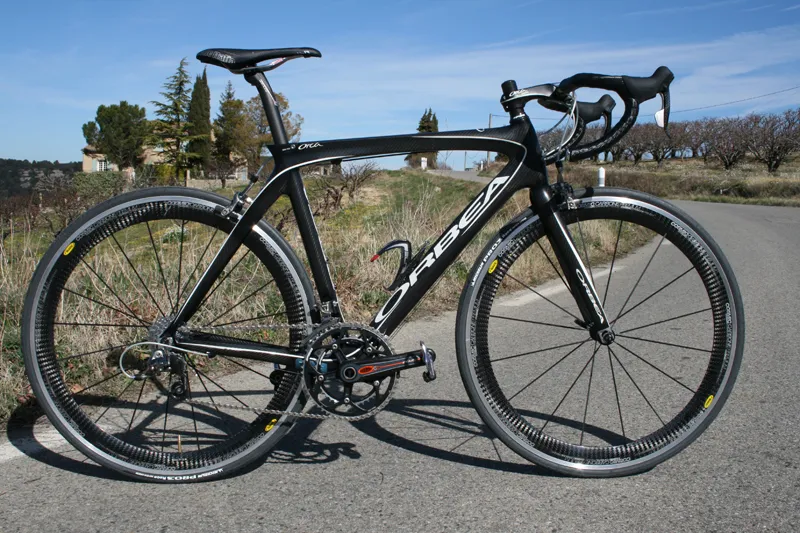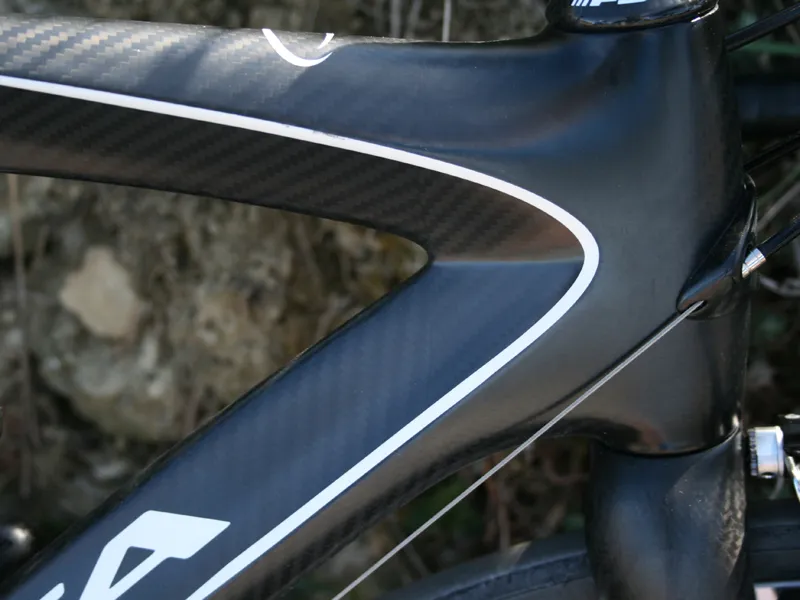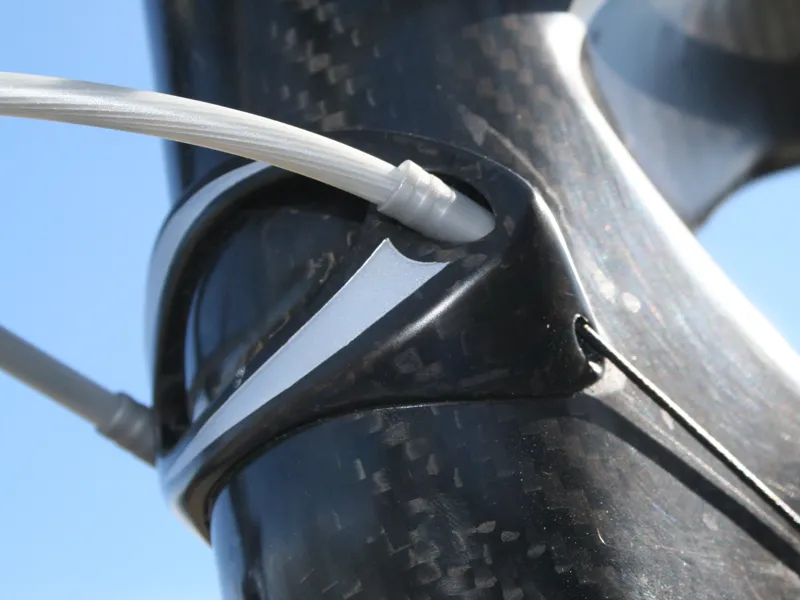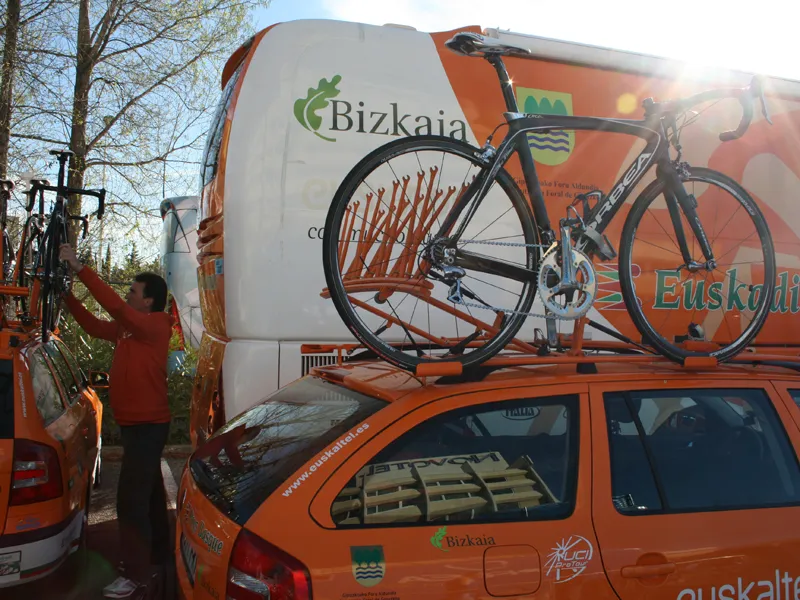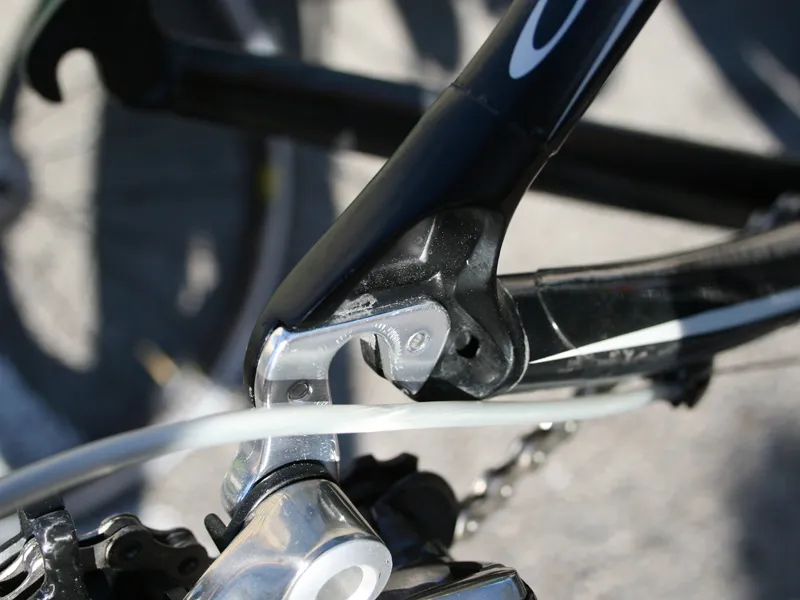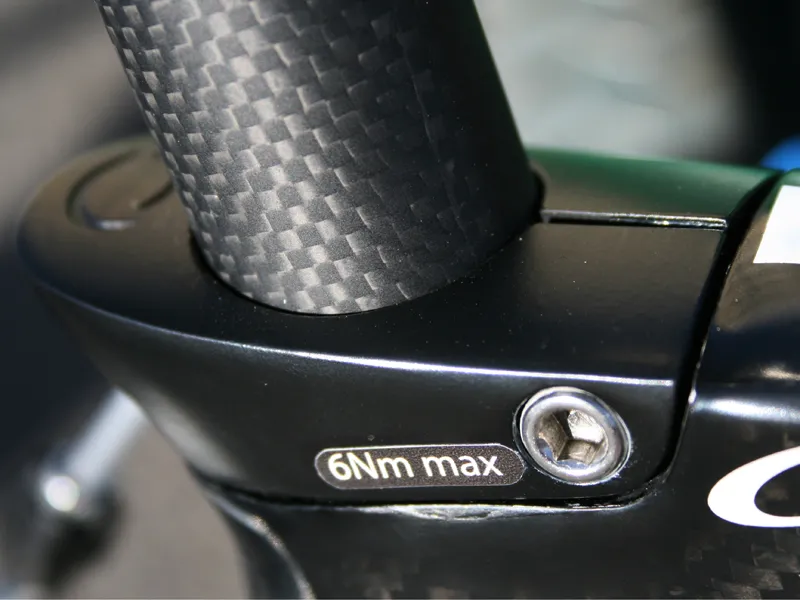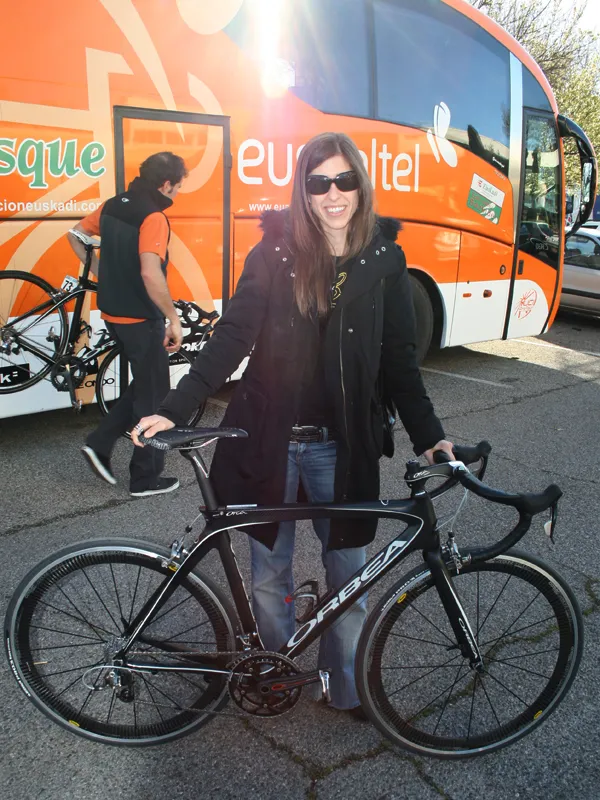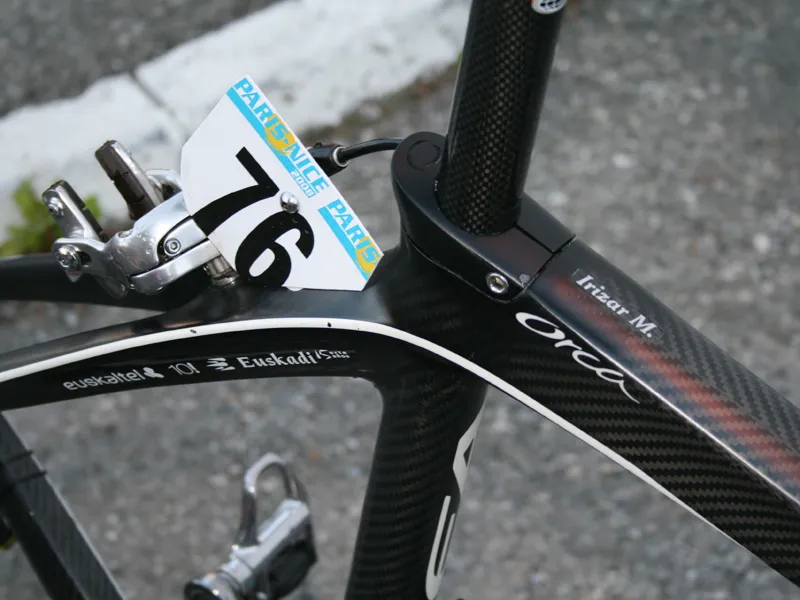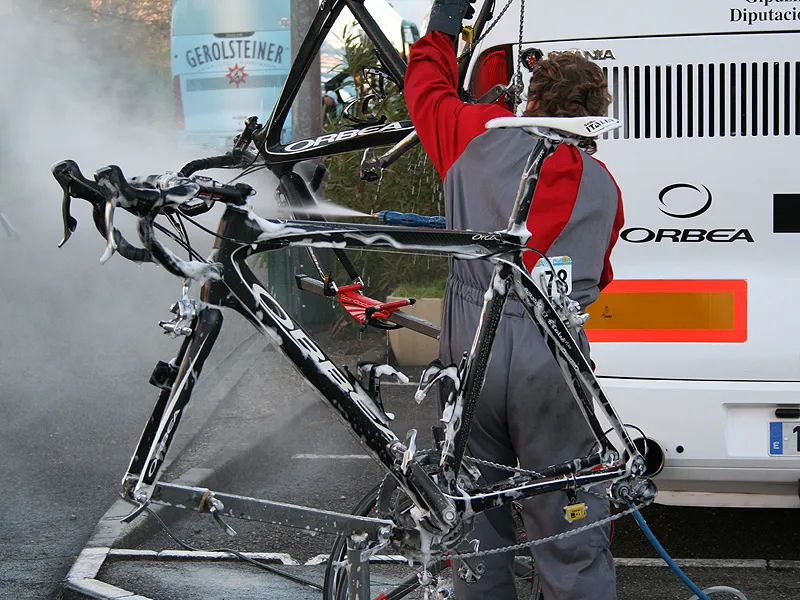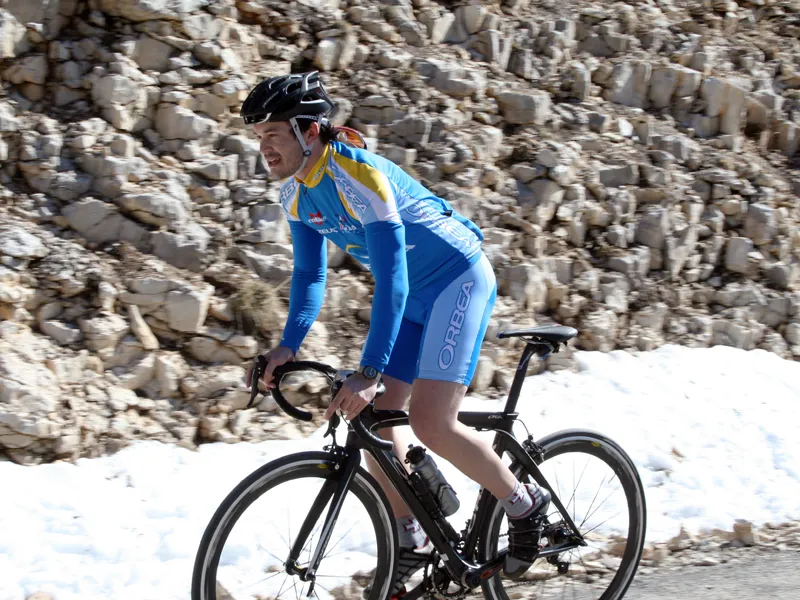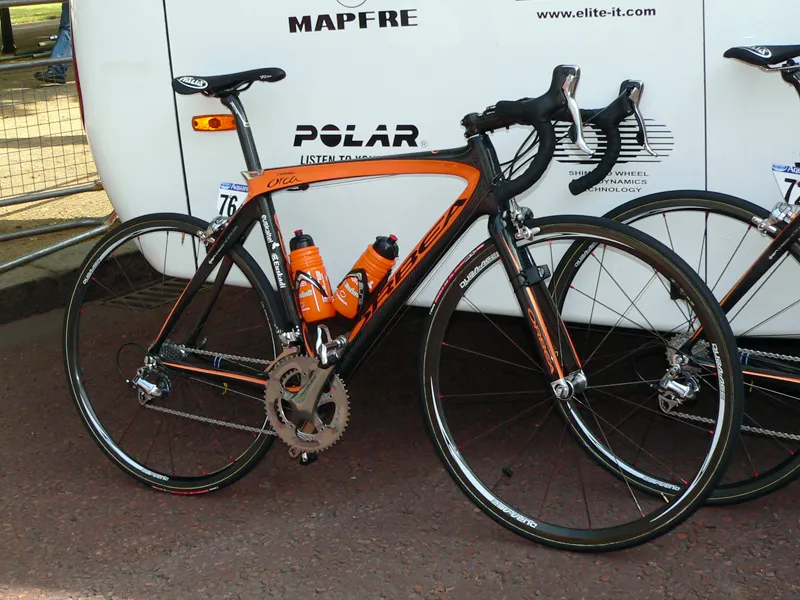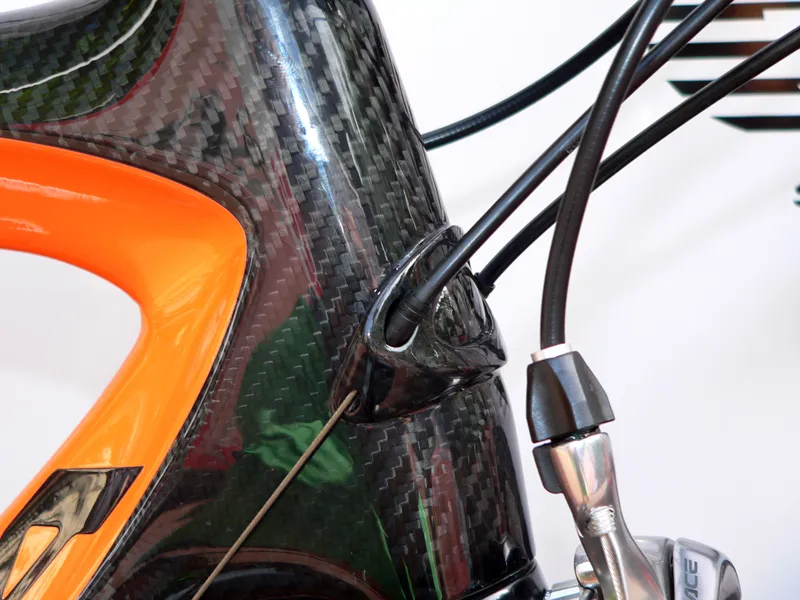Orbea has tweaked its top-end Orca carbon frame, shedding grams and improving stiffness for a very early 2009 model.
Basque bike builder Orbea has turned things up a notch with a rather early introduction of the 2009 version of its carbon fiber Orca road bike frame. Available now, the new Orca is a substantial 20 percent stiffer and, by losing nearly 90 grams, around 10 percent lighter, Orbea says.
Claimed weight is now just 1290g for the frame, fork and headset yet prices will reportedly increase only marginally.
"We listened to both the team and to the market, and tried to put those needs into this frame," says Orbea marketing manager Joseba Arizaga.
"After feedback from the Euskaltel riders, we made some not radical, but important, developments."
"The Orca is an ‘alive’ project. It’s always moving," says Miriam Bengoetxea, a composites engineer and Orbea’s product development manager.
"We know that the pros are always pushing things to the limit, so we have consulted them a great deal. This evolution takes things to the next level."
Same lines, lighter, stiffer material
Orbea retained the existing mould and thus the current Orca’s sensual lines. Improvements were primarily made by fine-tuning the carbon lay-up schedule as well as the mix of high modulus Toray M40J and high-strength M30S fibres that was used. Previous Orcas used a 50/50 mix of M40J and M30S; the 2009 model now uses a stiffer 70/30 blend.
"It would be easy to simply make a frame lighter: you just take out 10 or 20 layers carbon," says Bengoetxea.
"Of course, in reality, it’s not that simple, as durability would be compromised. Equally, it’s easy to make a stiffer frame: just use more M40J carbon. But then strength is compromised. It could be damaged if you hit a pothole, for example. You need a mix to make the frame stiff, light and durable.
"Even better carbon fibre is available," Bengoetxea says. "But we can only use the best that is available to us, as it is not all available for use in the bike industry, as lots are used by, for example, Airbus. Our goal was to get ultimate efficiency."
The new carbon mix yields the desired increase in stiffness in the carbon structure itself but the weight savings come elsewhere. The seat clamp of the Orca is now magnesium instead of aluminium and the head tube badge with its cleverly integrated housing stops is now carbon fibre. The material changes yield 20g and 7g of savings, respectively, and new one-piece alloy dropouts shave another 25g.
"Some manufacturers use carbon drop-outs," says Bengoetxea, "but if you crash, you can’t replace them, and your bike is finished."
Sweating the tiny details
Other weight saving details include a carbon fibre seat tube insert instead of the previously used aluminium, a new front derailleur mount and even the more spartan finish.
"The weight savings of each piece don’t sound that much on their own, but already we were on the limit, so 10g here and 10g there is a big percentage," says Arizaga.
"To reduce the seat clamp - such a small piece - by 20g is, we think, pretty incredible. Some push their weight, some push their stiffness. But we do both, and with a lifetime warranty to go with it, too."
The ‘old’ Orca was, and still is, a notable performer among its peers. We've spent a lot of time on the tested the previous version and been extremely satisfied, so it was obvious that a fair bit of work would be needed to improve on it. Nevertheless, the significant increase in stiffness was noticeable on our preliminary test rides yet the new Orca retains the same comfortable ride, light and manoeuvrable handling, and reassuring high-speed stability we were accustomed to.
Orbea’s Euskaltel-Euskadi team is apparently pleased with the changes, too, as it has been putting the new frame through its paces at least since last year’s Tour de France. With months of pro-level testing under its belt and what sounds to be carefully chosen evolutionary changes, the new Orca is likely to be a winner indeed.

